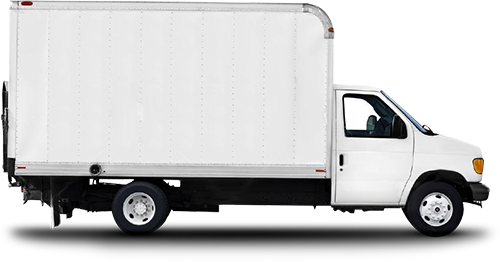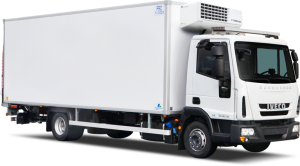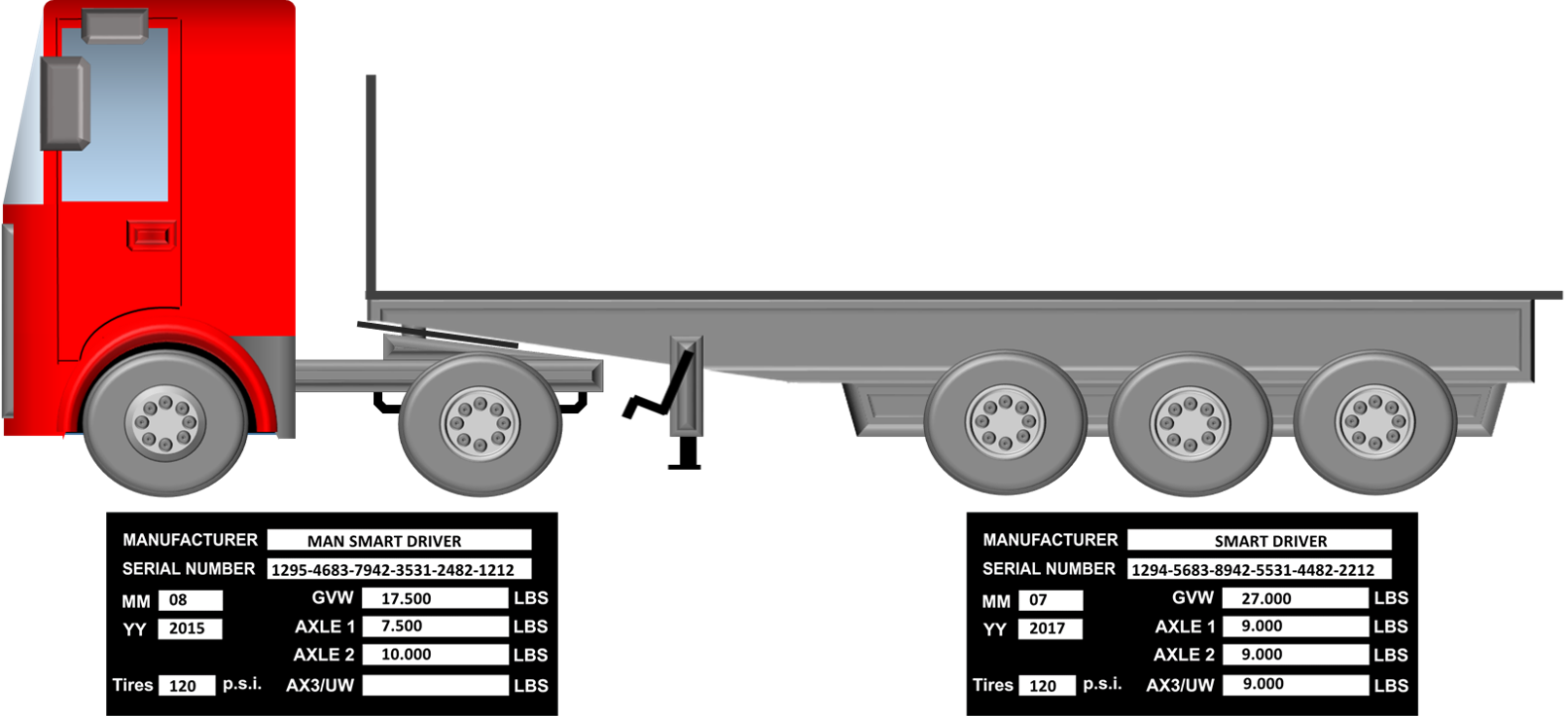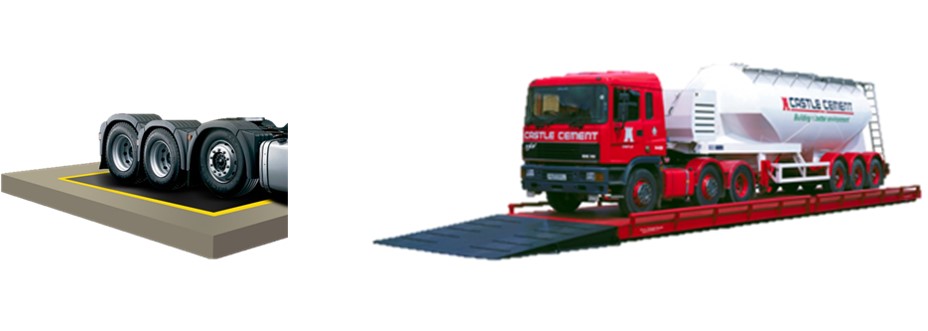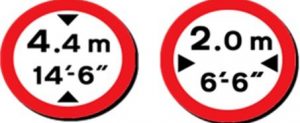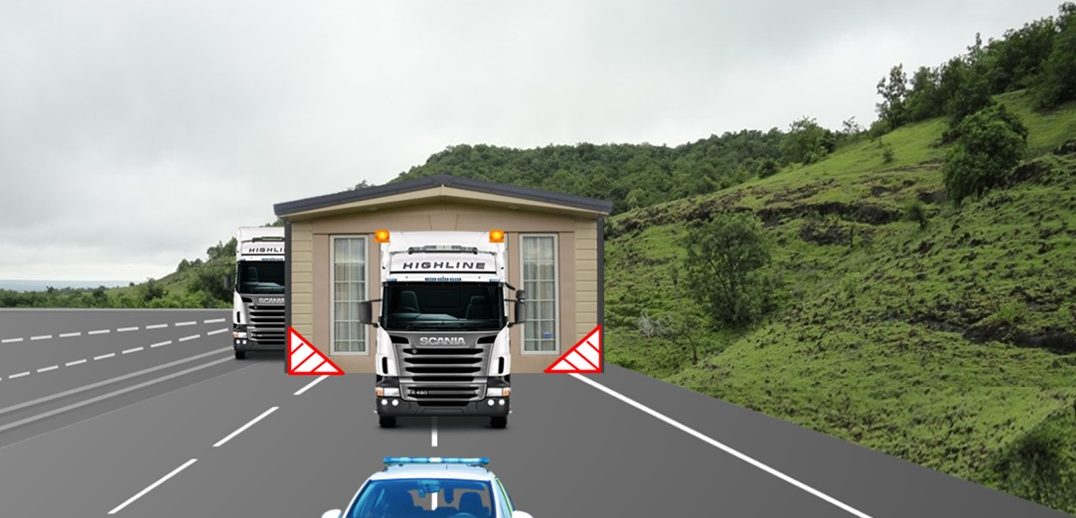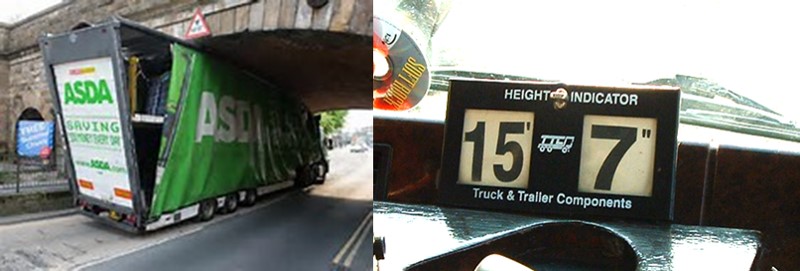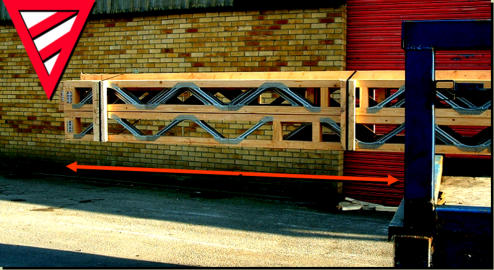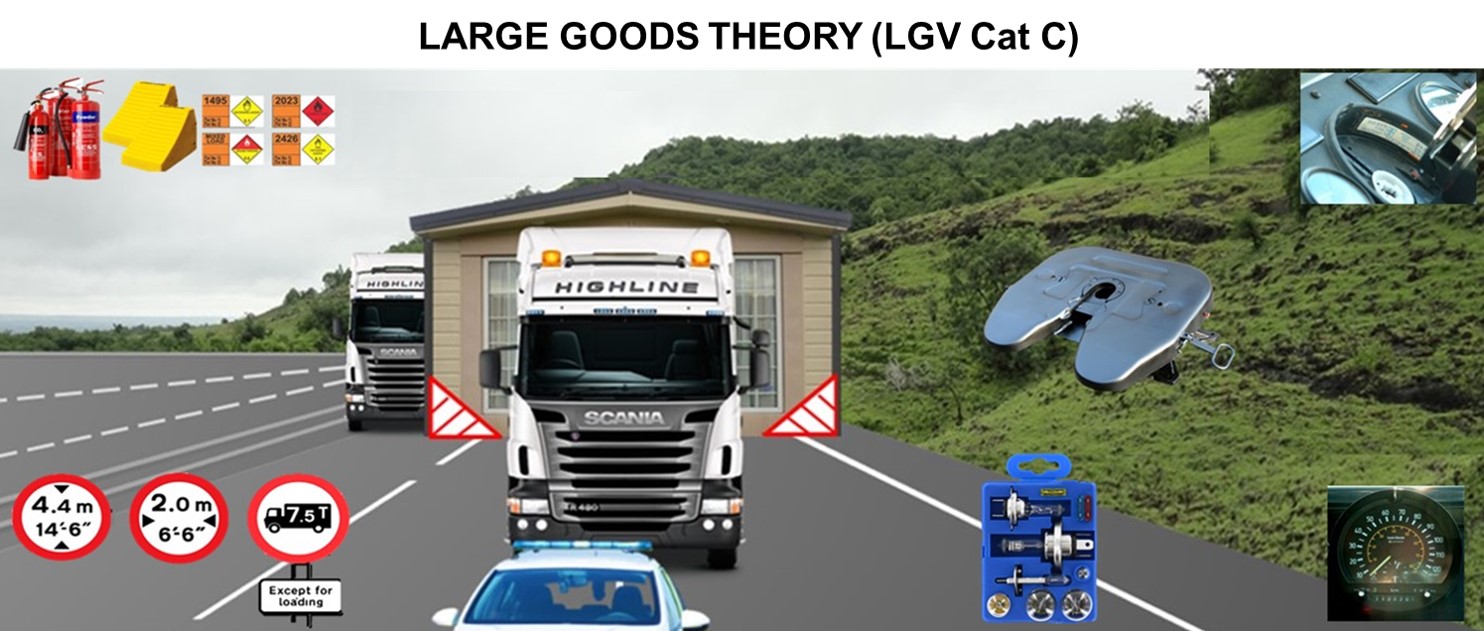WEIGHTS AND DIMENSIONS
The Maximum authorised mass (MAM) of your vehicle is important; your driving licence categories depict the size of your vehicle. There are three main categories:
Cat C1
Up until 1997 anybody that passed a car test got automatic rights to drive this vehicle. The C1 has a maximum authorised mass of 7.5 tonnes. MAM is the total weight of the vehicle including the load. This is depicted by the weight plates on the vehicle. This type of vehicle is classed as a light Large Goods Vehicle (LGV) and has the same speed restriction as a car – 60mph on a single carriageway, 70 mph on a dual carriageway and 70mph on a motorway.
You can also use all three lanes on a motorway.
This type of vehicle does not display any additional
weight markers. Since 1997 this type of licence can
only be obtained by taking a Cat C theory and a C1 practical test.
This category of vehicle is often used for home delivery.
Cat C
The Cat C vehicle is an LGV that has a MAM that exceeds 7.5 tonnes but is rigid. It can have as many axles providing it does not tow a trailer. You will have to pass a Cat C theory and a practical test to obtain the licence. The Cat C vehicle has to display weight markers on the back; these are yellow and red chevrons.
 You will be restricted to different speed limits: Single carriageway 50mph, (except Scotland and Northern Ireland where it is still 40mph). Dual carriageways 60mph, (50mph in Scotland and Northern Ireland) and 60 mph on all UK motorways. In addition, because this vehicle exceeds 7.5 tonnes when loaded, you will find a lot of restrictions in built up areas.
You will be restricted to different speed limits: Single carriageway 50mph, (except Scotland and Northern Ireland where it is still 40mph). Dual carriageways 60mph, (50mph in Scotland and Northern Ireland) and 60 mph on all UK motorways. In addition, because this vehicle exceeds 7.5 tonnes when loaded, you will find a lot of restrictions in built up areas.
Housing estates and old villages often display signs that restrict LGV’s over 7.5 tones MAM, as they cause damage to the roads and foundations of the old buildings. Remember, even if you are un-laden, MAM means what your vehicle weighs when fully laden. A Cat C LGV is restricted to the middle and left lane of a three lane motorway. The only time this size of vehicle can use the right hand lane is if it is a two lane motorway, the left hand lane is closed for road works or you have been instructed to by the escort vehicle of a wide load.
Cat C+E
The Cat C+E vehicle is an LGV that also has a trailer, there are two types: Articulated, and Wagon and draw-bar. The articulated vehicle comprises of a tractor unit and trailer. The wagon and draw-bar is a standard Cat C vehicle towing a large trailer of equal size.
The trailer size does vary slightly. The Cat C+E LGV exceeds 7.5 tones MAM and you will be required to pass a Cat C+E practical test. You do not need to take a Cat C theory as the C theory covers you for both categories. This type of vehicle will have the same restrictions as a Cat C vehicle, including the speed limits. In addition to the restrictions of the Cat C vehicle, the vehicle is classed as a long vehicle and you will find additional restrictions on length. You will have to display long vehicle weight markers on the rear of the trailer. These are yellow with a red boarder.
All new LGV’s display a red reflective strip on the edges of the rear of the trailer.
WEIGHTS
When loading a Large Goods Vehicle (LGV) the most important thing that you need to know, irrespective of the category is how much weight you can put on the vehicle. First of all you need to know what the un-laden weight of your vehicle is. This is also known as the tare weight.
The vehicle will have an axle plate displayed; the information will tell you what the maximum weight of each axle can be. If you are unsure you can take your vehicle to a weigh-bridge.
To help explain, below there is a graphic of a fictitious articulated combination. As you can see indicated by the weight plates, the total combined weight this vehicle is capable of is 44.500 lbs. This is only an example.
This does not take into consideration the cab, engine, gearbox and trailer weight. The total weight of the un-laden combination (tare weight) is 10,000 lbs, the weight is distributed over all of the axles.
 Once you have determined the weight of the empty vehicle, you can subtract this weight from the maximum authorised mass (MAM) displayed on the plate, this will leave you with the payload. It is the driver’s responsibility to make sure that the MAM and the axle weights have not been exceeded. Overloading your vehicle can result in damage to road surfaces, structures such as bridges and buildings. The vehicle can also be seized by the authorities and you will face a severe fine.
Once you have determined the weight of the empty vehicle, you can subtract this weight from the maximum authorised mass (MAM) displayed on the plate, this will leave you with the payload. It is the driver’s responsibility to make sure that the MAM and the axle weights have not been exceeded. Overloading your vehicle can result in damage to road surfaces, structures such as bridges and buildings. The vehicle can also be seized by the authorities and you will face a severe fine.
There are two types of weigh-bridge. An axle weigh bridge will tell you what weight is already on the axles, this will include the cab, engine gearbox and vehicle body. There is also a full weigh-bridge: this will weigh the entire vehicle.
As a driver of a large goods vehicle you must be fully aware of the height, width and length of your vehicle, in addition the restrictions that apply to you. In this section we will only cover the questions that are asked on the theory test. There is a lot more legislation that you must be aware of that is not covered here.
Wide loads
The standard width of an LGV Cat C and C+E is approximately 2.4 metres (8 ft.). If you are driving a vehicle with no additional width on English roads you must obey the mandatory speed limits for a vehicle of this size. Single carriageways 50 mph, dual carriageways 60 mph and motorways 60 mph.
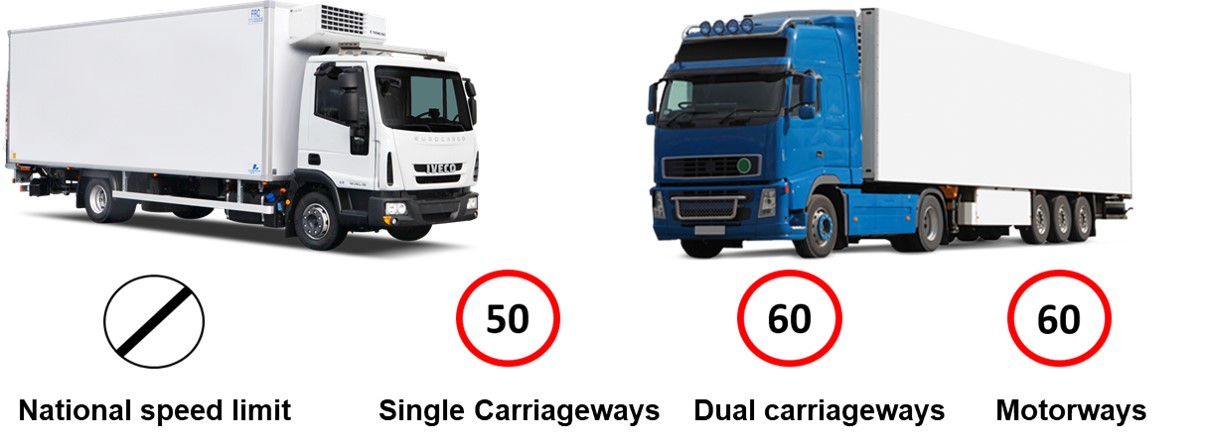 These speed limits do not apply in Scotland or Northern Ireland. In these countries on a single carriageway it is 40 mph and dual carriageways 50 mph, the motorway speed limits the same as England.
These speed limits do not apply in Scotland or Northern Ireland. In these countries on a single carriageway it is 40 mph and dual carriageways 50 mph, the motorway speed limits the same as England.
The speed limits shown above are relevant for a vehicles up to 4.2 metres wide, even thought these speeds can and will cause danger to others.
If the width of your vehicle exceeds 2.9 metres (9’5”) you must display on the back of your vehicle red and white side projection markers.
This will warn following traffic of your load overhang and potentially avoid an accident. The speed limits do not change.
If the width of your vehicle exceeds 3.5 metres and is less than 4.3 metres (14’2”) in addition to projection marker boards you must carry an attendant (drivers mate) and notify the police.
This is very important as during the course of your journey you could have to drive over narrow bridges or down narrow roads. The police will make these situations safe. In addition the speed limits do not change, but you will find with a vehicle this wide they will be difficult to achieve, especially on single carriageways.
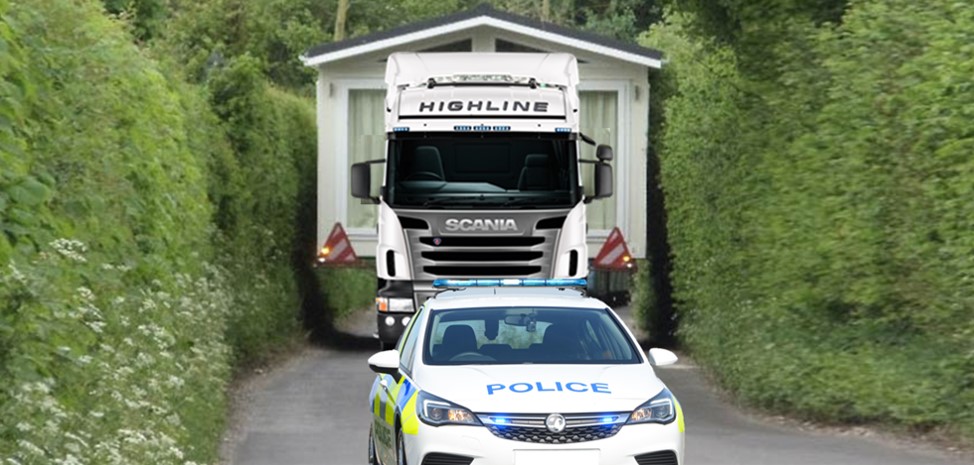 If your vehicle exceeds 4.3 metres wide in addition to the restriction so far, the speed limits do change for safety reasons as you now occupy the majority of all carriageways.
If your vehicle exceeds 4.3 metres wide in addition to the restriction so far, the speed limits do change for safety reasons as you now occupy the majority of all carriageways.
Single carriageways 30mph, dual carriageways 35mph and motorways 40mph. Again these speed limits do not apply in Scotland and Northern Ireland. In these countries on single carriageways 20mph, dual carriageways 25mph and motorways 30mph. There are other speed limits but it depends on the category that your vehicle comes under, the limits mentioned are for the purpose of the test.
Height
The height of your vehicle will have a big impact on the routes that are available for your journey. There are many height restrictions throughout the road network, not only in this country but throughout the world.
When planning a journey it is not just the width of your vehicle that you need to plan for.
If your vehicle is higher than 3.0 metres (9’10”) you must take extra care when driving in road tunnels, through arched bridges and near overhead cables. If your vehicle does exceed this height you must display in the cab a height indicator for both truck and trailer components.
The indicator will serve as a constant reminder of the height
of your vehicle. It is the driver’s responsibility to ensure that the
indicator is recording the height accurately. Do not rely on the previous
drivers measurements. The indicator could be showing the height of a
previous trailer.
The road network in the United Kingdom has advanced warnings of nearly all restrictions that could affect your vehicle. However, some situations might not be marked as they are standard.
Unmarked bridges have a standard height clearance of 5 metres (16’6”), if the bridge is lower than this measurement there will be a warning sign preparing you for this.
You can buy road maps specifically for LGV vehicles that have the restrictions included on its pages. You can also buy satellite navigation systems with restrictions pre-loaded. If your vehicle is over five metres high, your route will have to be planned very carefully.
When approaching a tunnel or low bridge your vehicle dimensions must not exceed the data shown. Approach between the centre lines indicated by the white lines above the archway.
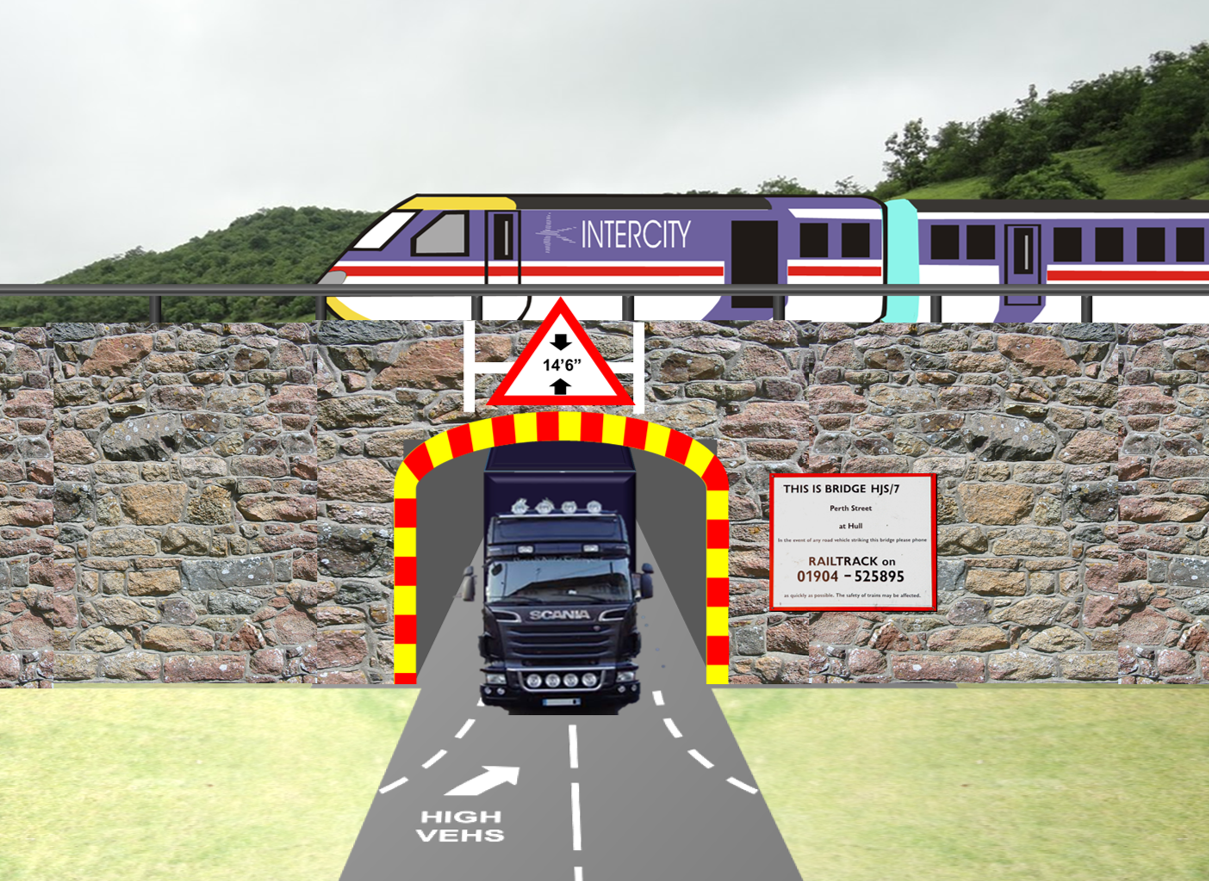 In this picture you will also notice there are additional white markings on the road surface to assist. Don’t leave it too late to straighten up otherwise you will hit the lower parts of the bridge with the back part of your vehicle. Similarly, don’t move back to the left side of the road until the rear of your vehicle has cleared the restriction.
In this picture you will also notice there are additional white markings on the road surface to assist. Don’t leave it too late to straighten up otherwise you will hit the lower parts of the bridge with the back part of your vehicle. Similarly, don’t move back to the left side of the road until the rear of your vehicle has cleared the restriction.
When driving through a tunnel, because of your height you may need an escort. This is because you may need to take up more than one lane.
It is down to you as the driver to plan your route carefully. As you can see by the picture, the sign is giving advanced warning of a low bridge. The sign also gives an alternative route to avoid this situation. Know your vehicle dimensions and react as necessary to warning signs and you will arrive at your destination without hitting low obstructions.
In the unlikely event of you colliding with a bridge it must be reported immediately as you could have caused damage to its structure. If you collide with a railway bridge this must be reported to the railway authority. Damage could affect the safety of the trains and passengers.
The information that the authority requires will be displayed on a plaque, they will need the bridge number, bridge location and damage caused.
It is not just road bridges that will affect your journey, simple street furniture such as street lights and telephone cables may hinder your progress. These are set at a minimum height of 5.25 metres (17’6”) but this should never be taken for granted.
In addition to normal warning signs, in certain places you could find warning bells across the road. If the height of your vehicle makes the bells chime, stop immediately.
Length
Exceptionally long vehicles are classed as vehicles with lengths that exceeds 27.4 metres (90’). If your vehicle exceeds this length you must notify the police, they will assist in controlling other traffic.
 You must carry an attendant to help when navigating tight
You must carry an attendant to help when navigating tight
situations. Because of the length of this vehicle you will find
restrictions in place in certain situations, level crossings are one
example that have restrictions in place for long vehicles.
The longer your vehicle the more hazards you will encounter, there is a much greater risk of grounding in some situations. Traffic calming humps and hump back bridges pose major problems. Level crossings also pose a problem, they maybe called level crossings, this is only for the train. It is very rare that as a driver you will experience a flat surface when driving over them.
 You will find restrictions depending on the dimensions of your vehicle at tunnels, bridges, ferries and level crossings.
You will find restrictions depending on the dimensions of your vehicle at tunnels, bridges, ferries and level crossings.
Restrictions on level crossings
If your vehicle exceeds 61’6” (18.75m) long, or 9’6” (2.9 m) wide or 44 tonnes total weight you must ring the signal operator and get permission to cross. Once permission is granted you must proceed slowly. There is a risk of grounding. Slow means 5 MPH. When you have crossed stop in a safe place and notify the signal operator that you are clear.
If your vehicle breaks down on the crossing ring the signal operator straight away and stay well clear of the vehicle.
In more rural areas you may need to open the gates at the crossing, after following the previous directions you must also close the gates, always close the one furthest way first.
Overhanging loads
If your load overhangs the vehicle by more than 2 metres (6’6”) you must display red and white triangular projection markers to warn following traffic of the overhang.


